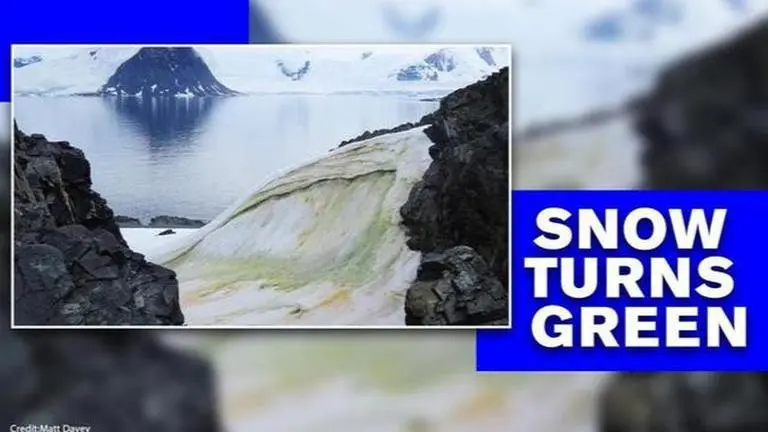Updated 22 May 2020 at 07:39 IST
Antarctica snow is turning green, climate change to fuel blooming algae growth: Study
Snow is turning green in the Antarctic Peninsula due to the blooming algae which are likely to spread as temperatures increases as a result of climate change
- World News
- 2 min read

The snow is turning green in the Antarctic Peninsula due to the blooming algae which are likely to spread as temperatures increases as a result of climate change. According to the researchers, the green snow algae multiplies in warm temperatures and gets habitable in the regions of wet snow.
The green snow algae are microscopic organisms when measured individually but when the organisms grow simultaneously, they turn the snow bright green and can even be spotted from space, researchers said in a study published in the Nature Communications journal on Wednesday, May 20.
The researchers have also created the first large-scale map of the organisms and their movements by gathering satellite data of over two summers in Antarctica between 2017 and 2019, which allowed the scientists to map the microscopic algae as they bloomed across the snow of the Antarctic Peninsula.
Advertisement
The warmer areas in the Antarctic coastline are usually seen with patches of the green snow algae. The average temperature in the coastline is little above zero degrees celsius during the Southern Hemisphere's summer months of November to February, the study added.
The researchers further highlighted that the Antarctic Peninsula is part of the region that has experienced the most rapid warming in the latter part of the last century. High temperatures were recorded in February and a nine-day heatwave burnt the continent's northern tip earlier this year.
Advertisement
Organism to expand as global temperatures increase
Researchers believe the organisms will expand as global temperatures increase. The Scientists classified 1,679 separate blooms of green algae on the snow surface, covering an area of 1.9 km2 -- which equates to a carbon sink of around 479 tons per year. A carbon sink is a reservoir that absorbs more carbon than it releases.
Spread of algae linked to birds
As per the study, the spread of the organisms is linked to bird populations whose excrement acts as a fertilizer to expedite their growth. As Penguin populations are affected by warming temperatures, the snow algae could lose sources of nutrients to grow, the researchers said.
Published By : Brigitte Fernandes
Published On: 22 May 2020 at 07:39 IST
